Batik, emojis and motos in Jogja: a studio visit with Arwin Hidiyat

Mikala Tai
When you encounter an artwork in the gallery you are met, ensconced in pristine surrounds, with an object of secrets. While you can appreciate the work through a formalist reading, a symbolic interpretation, or through socio-political references, you are rarely privy to the creative process. The artist’s hand, time and techniques are not necessarily marked upon the object; they remain hidden, obscured and sometimes even lost to its creator through the haze of faulty memory. To step inside an artist’s studio is to be invited into this process. Here the craft and tireless hours involved with the creation of an artwork are revealed—in a moment of denouement, you are now beholden to the secret.
Speaking for many in my field, I’m sure, as curators we chase this moment. Constantly intrigued by art, we love to slip behind the scenes and become privy to the how and the why. Studios are infinitely surprising places. Large looming sculptures sometimes emerge from tiny, tidy spaces, while small, delicate works can begin amidst a mess of rejected rubble. The creative beast has an unpredictable maddening manner.
This year, in the stinking heat of high summer in Yogyakarta, I spent a few days on the back of a moto visiting such artists’ studios. I had been working with local artist Arwin Hidiyat over WhatsApp ahead of 4A’s current exhibition, Jogja Calling, to decide on what batiks and drawings we would include in the exhibition. My Bahasa is practically non-existent and, while Arwin’s English is better than my Bahasa, we were unable to talk through our ideas and plans. Instead we swapped images. Sometimes I sent him a floor plan with question marks and arrows scribbled in purple, other times he sent me test swatches accompanied by an emoji; now-and-then we’d Google Translate a short conversation back and forth, hardly the equivalent of a face-to-face visit.
By August I was riding around the outskirts of Jogja, down a few windy lanes and in a small village where Arwin lives and works. The drawings and batiks we had been crudely chatting about online for months were finished, and they were perfect. Over an afternoon filled with coffee, punctuated by animated sign language, Arwin told me about the mystical nature of Java and the spiritual reality of his everyday. He also told me about batik.
When Arwin spoke about batik, it was like no batik I had ever learnt about. He spoke about stories, about spirits and, as the wax ran smoothly out of the tjanting, these tales became tangible on the fabric. I had always studied batik as an intricate process, but with Arwin the arduous process was eclipsed by his insatiable need to create epitaphs for Jogja. Over the next few days he invited me to visit while he worked. I tried my hand at making a batik but the wax was either too hot, too cold or my hand was too fast or too slow; I made little more than blobs of wax that congealed on the surface of the fabric as if refusing to infuse. Meanwhile, Arwin’s tjanting never stopped moving. It oscillated to and fro, the hot wax and figures emerging effortlessly on the fabric. All the time, between the wax, the boiling, the dying and the fixing, Arwin regaled me with traditional Javanese tales, his concerns for contemporary Jogja and his hope that in Australia we would like his work.

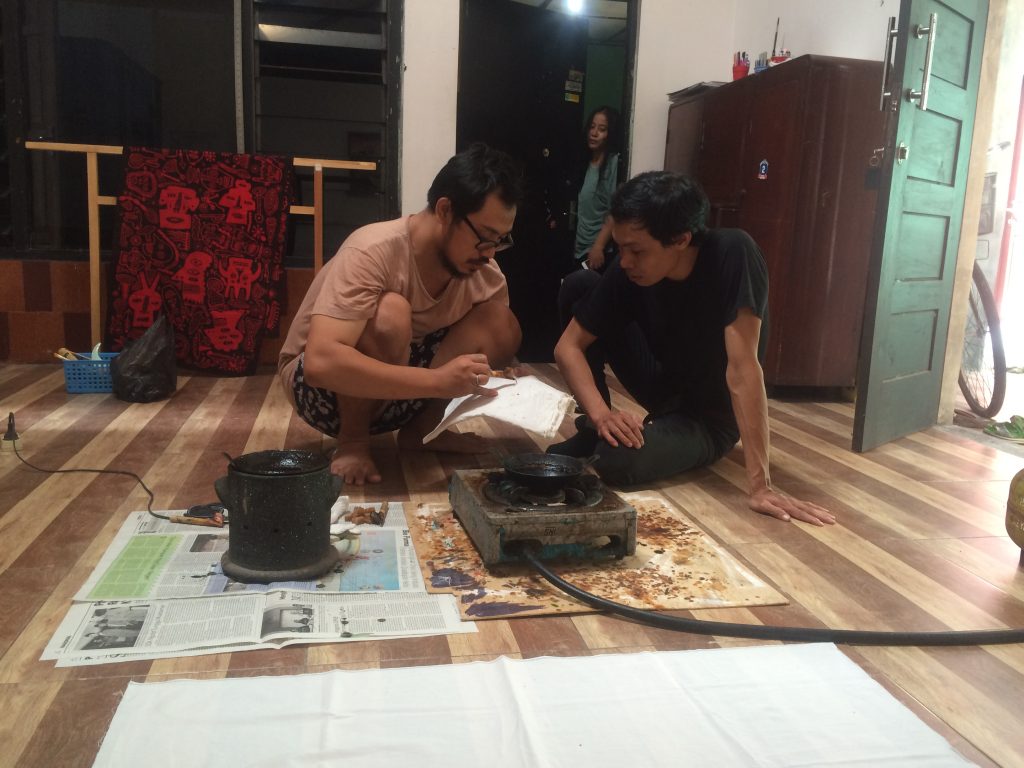
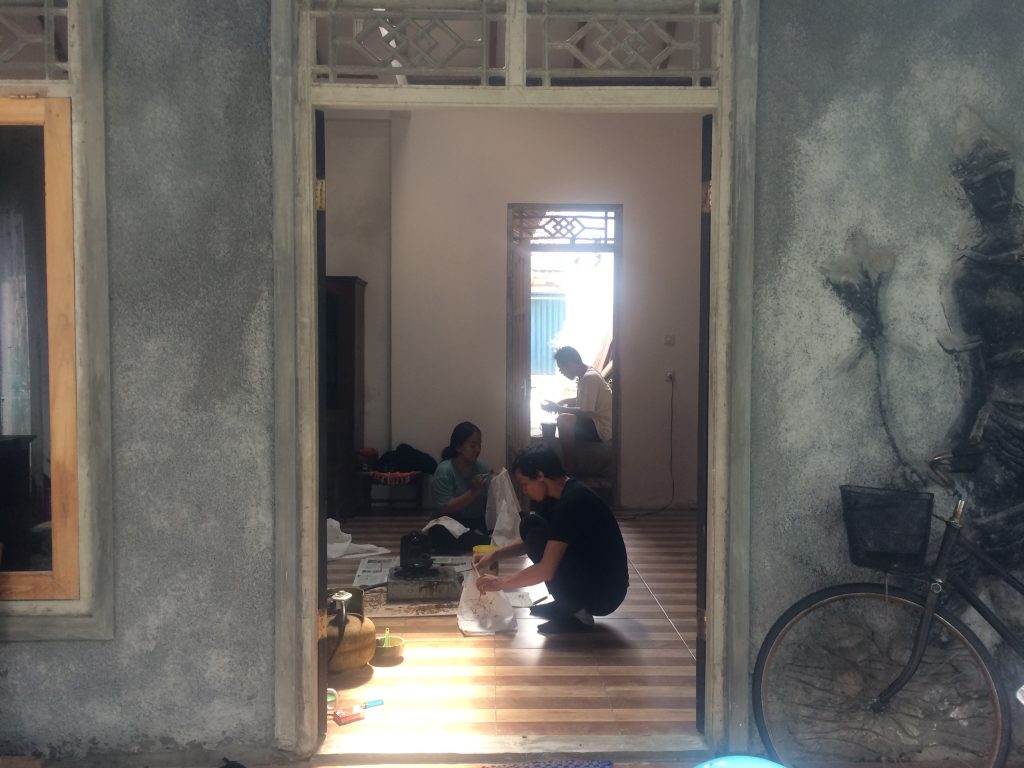
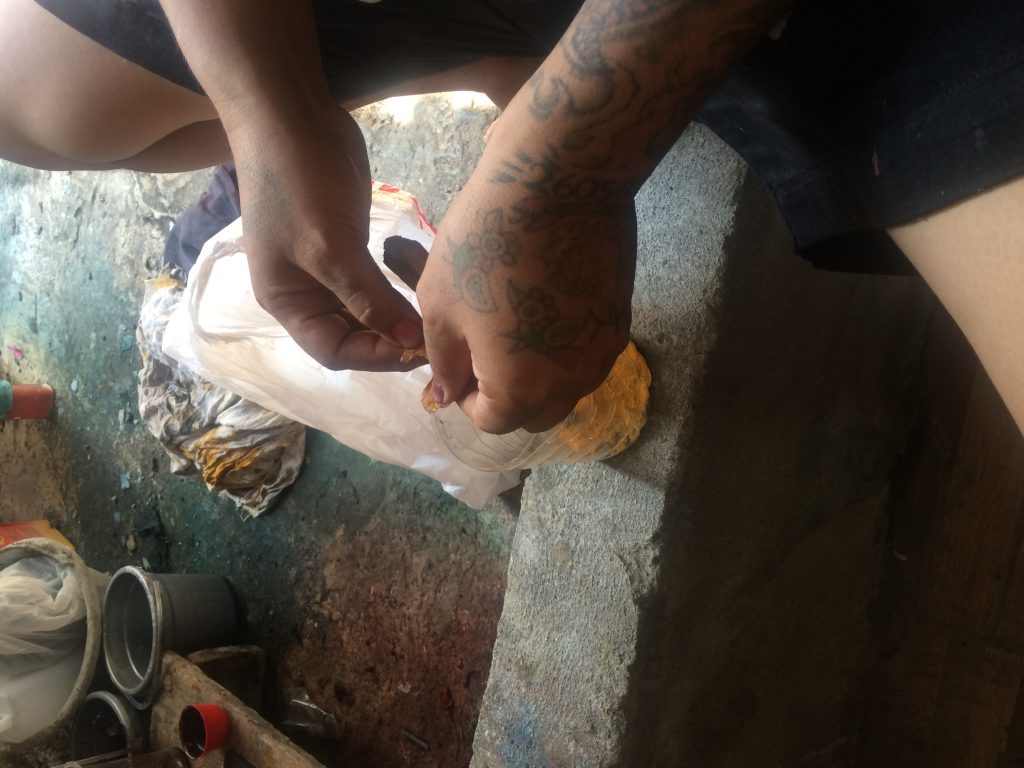

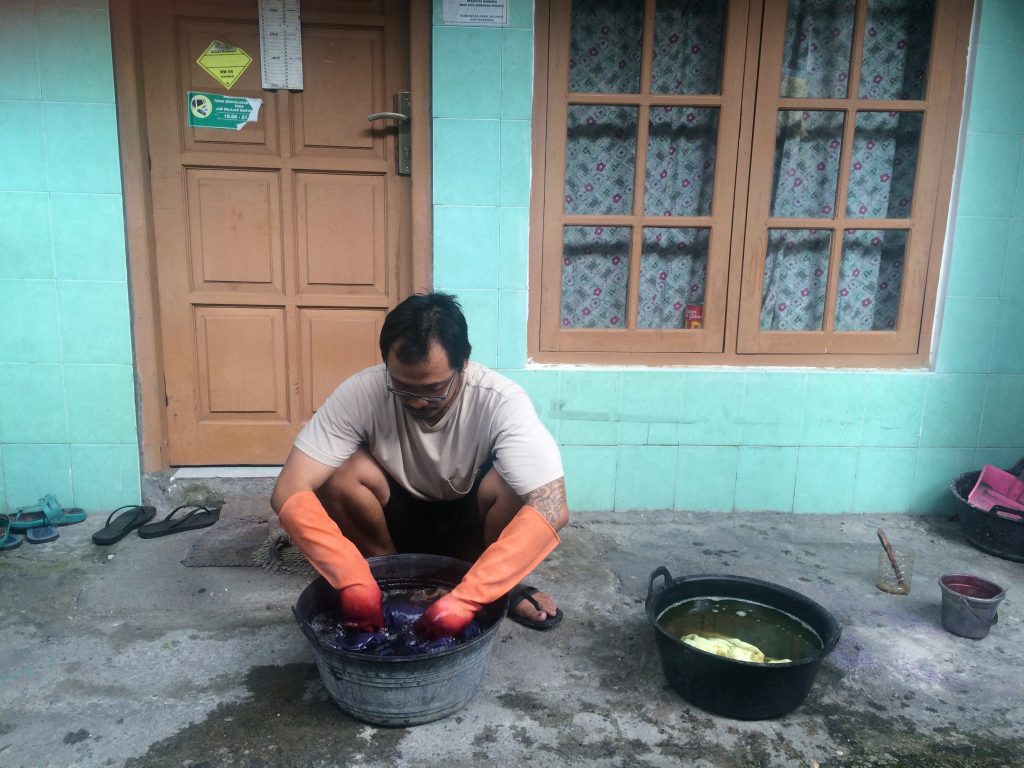

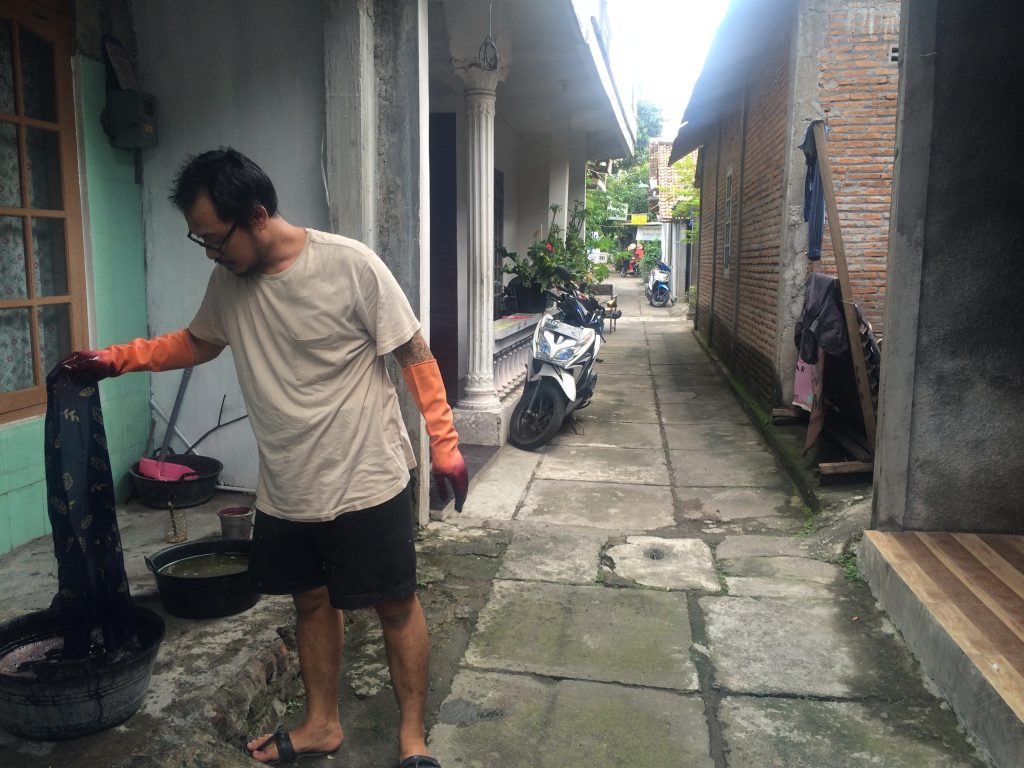
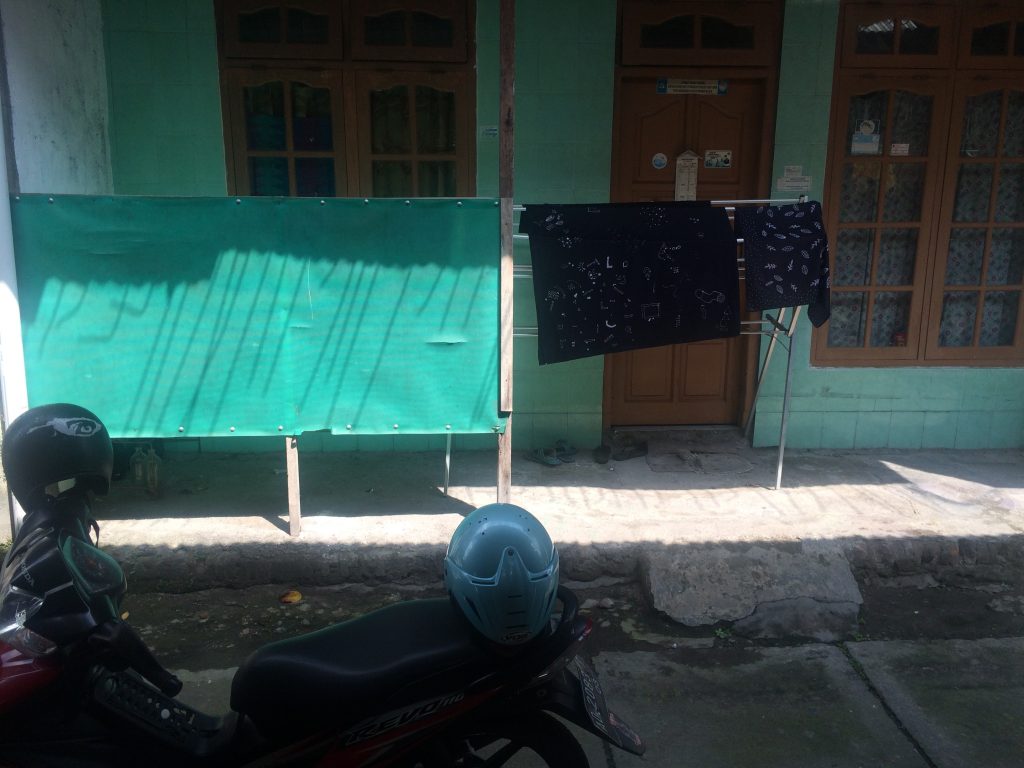
Photos: Mikala Tai, July 2016. With thanks to Arwin Hidiyat.
Mikala Tai is Director of 4A Centre for Contemporary Asian Art.
See more from 4A Papers, issue 1
Commissioned for 4A Papers Issue 1. © Copyright 2016 4A Centre for Contemporary Asian Art and the authors, artists, photographers and other contributors. No part of this publication may be reproduced without permission from the Publisher. The opinions expressed in 4A Papers are those of the contributing authors and not necessarily those of the Editor or Publisher. Permission has been sought to reproduce all images with appropriate acknowledgement where possible.


